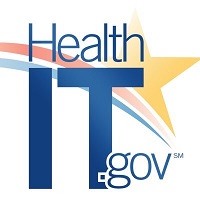 By Stephanie Garcia, ONC
By Stephanie Garcia, ONC
Twitter: @ONC_HealthIT
The Sync for Genes program, launched by ONC in 2017 in partnership with the National Institutes of Health’s All of Us Research Program, aims to enable the sharing of standardized genomic information among laboratories, providers, patients, and researchers by advancing the development and use of industry-supported standards, such as the Health Level Seven International® (HL7®) Fast Healthcare Interoperability Resources® (FHIR®) standard.
This work has been advanced by pilot site demonstration projects conducted through a series of project phases.
- Phase 1 focused on testing of use cases included in HL7®’s Clinical Genomics Workgroup’s Domain Analysis Model, the results of which contributed to the Genomics Reporting Implementation Guide as part of the FHIR Release 3.0.
- Phase 2 showed how genomic data could be exchanged for newborn screening, cancer treatment, pharmacogenomics, and bone marrow matching.
- Gaps in the FHIR Clinical Genomics specification, as applied to the sharing and integration of genomic data generated by laboratories into the health care setting, were identified and addressed in Phase 3.
Sync for Genes Phase 4
Sync for Genes Phase 4 built on the progress made by each prior phase, which each tested different parts of the process of getting genomic data from the source to the point-of-care and to research settings. Sync for Genes Phase 4 goal was to advance the use of standardized HL7® FHIR®-based APIs in order to improve how genomic information and knowledge could be shared among individuals in clinical and research settings. To accomplish this, Phase 4 included two demonstration projects and an analysis to identify and prioritize challenges to the exchange and integration of genomic data.
Phase 4 Demonstration Site Project Results
Demonstration projects tested the use of HL7® FHIR®-based APIs to electronically exchange genomic data among organizations with at least one data user, such as a clinician. Utah’s Newborn Screening Program built on its work in Phase 2 by developing a proof-of-concept, web-based application using the SMART on FHIR standard and tailoring a genomic variant report to clinical specialists to whom newborns are referred.
As a member of both the Children’s Brain Tumor Network and the Pacific Pediatric Neuro-Oncology Consortium, the Center for Data-Driven Discovery in Biomedicine at Children’s Hospital of Philadelphia has existing agreements that it can leverage for sharing clinical genomic testing data. Genomics data from a set of pediatric brain tumor patients were structured as recommended by the FHIR Release 4 (R4) Genomics standard before being loaded into a FHIR server to provide the ability to query and retrieve the data using the FHIR API. A prototype app developed to provide a user interface targeted to a specific use case was shared with a team at the University of California, San Francisco for both clinical and research purposes.
The success of these two demonstration projects was supported by their use of genomics standards, previous experience with FHIR, access to open-source tooling and a sandbox environment. The Sync for Genes Phase 4 Final Report includes more information about the demonstration projects.
Continued Challenges to Standardized Sharing of Genomic Data for Patient Care
To see how the landscape has changed since Sync for Genes Phase 2, Phase 4 included an analysis that further documented both technical and non-technical challenges to widespread implementation, adoption, and use of genomics standards. This analysis consisted of feedback from a technical expert panel and project team members, findings from the demonstration sites, and a literature review.
Current challenges were categorized into six themes of continued need for:
- Standards development and content to support the integration and use of genomic data into both clinical and research systems.
- Support during implementation of genomic standards which can include the need for tools for testing and ensuring standardized implementations to support for low-resources settings.
- Infrastructure to support genomics that is flexible, robust, and can support the complexity of genomic data which can include supporting the ability to integrate, manage, and deliver genomic data, test results, and interpretations in ways that are consumable by end users who may not be trained in genomics.
- Supporting the utilization of genomic data according to the different needs of end users. For example, researchers utilize genomic data for discovery of disease mechanisms and treatments; clinicians to diagnosis and treat patients; and patients to understand hereditary risks, make lifestyle choices, and assist with family planning.
- Supporting the educational needs of both patients and providers.
- Better alignment of policy development with rapidly evolving genomics-related technology, expanding knowledge base in the field of genomics, and evolution of state-of-the-art clinical practices.
The final report offers suggestions and examples for each of the above categories that stakeholders from the genomics community can work to address. The Sync for Genes project, in collaboration with the demonstration sites to date, has primarily focused on the testing and development of interoperable genomics standards and their implementation. This focus on standards development and implementation is foundational to realizing the vision of genomic data flowing seamlessly to patients, providers, researchers, and other professionals. However, there is much more work to do in order to support interoperable implementation and to address the longer-term needs such as access to reliable educational materials tailored for specific users and to policies that align with the rapidly evolving field of genomics.
This article was originally published on the Health IT Buzz and is syndicated here with permission.
